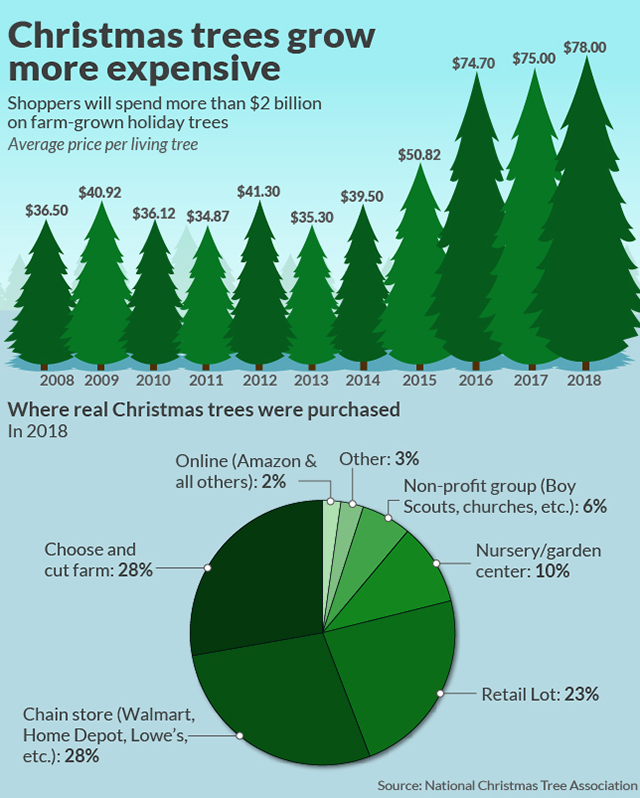Taylor Swift is getting people into the holi-tay spirit — and in the mood to cut down a live Christmas tree.
The 10-time Grammy Award winner and Forbes’ highest paid celebrity at the moment dropped a surprise Christmas single early Friday morning that she reportedly turned around in the past week.
“Christmas Tree Farm” cobbles together home video footage of Swift and her family from holidays past, when the singer was growing up with her brother on a Christmas tree farm in Reading, Penn.
The video features the future pop star opening presents under the Christmas tree — including an acoustic guitar. And it’s stirred plenty of holiday nostalgia among fans, with many ardent Swifties posting family Christmas tree photos on Twitter TWTR, +0.37%, or sharing their trips to tree farms to cut down their own live trees.
Americans spent more than $2 billion on over 32.8 million live trees last year, according to the National Christmas Tree Association, the official trade organization for the natural Christmas tree industry. And that was a 20% spike — or 5 million more trees — over the number of live trees purchased the year before, even though the prices of these festive pines also jumped 4% to top out at $78 per tree on average.

The NCTA has credited the growing demand on more millennials like Swift buying live trees as they start having families, as well as young adults choosing natural trees as a more sustainable alternative to artificial ones, which are mostly made of PVC plastic. While reusing an artificial tree year over year is more cost-effective and can reduce its environmental impact, most artificial trees eventually end in landfills, contributing more plastic waste. Buying a live tree locally (preferably without driving, or at least minimizing driving) and recycling it at the end of the season is often the most environmentally-friendly option, according to a New York Times report.
“We think we’re getting a big response out of the millennial generation — the thirtysomethings that are getting married and having kids are coming to real trees,” Doug Hundley, the seasonal spokesperson of the National Christmas Tree Association, told MarketWatch. “Millennials tend to know more about what they buy, like where it comes from, and they are into organics and the natural environment. And a real tree is obviously the better environmental choice.”
Read more: Will millennials be the saviors of the real Christmas tree industry?
But sales of artificial trees also rose 12% last year, according to the NCTA, so interest in Christmas trees, period, seems to be up overall.
But those looking for natural, live trees will probably have to spend more to spruce up their homes this year. That’s thanks to a tight supply in the wake of the Great Recession, as well as a labor shortage and inclement weather stunting harvests at some tree farms in Oregon, Michigan, North Carolina and Missouri over the past couple of years. Hundley told MarketWatch that he expects to see prices creep up another 4% this year, meaning the average tree would cost just over $81.
Read more: ‘Great Recession’ a decade ago is one reason your Christmas tree will cost more this year
And here’s Swift’s “Christmas Tree Farm” video:










Add Comment